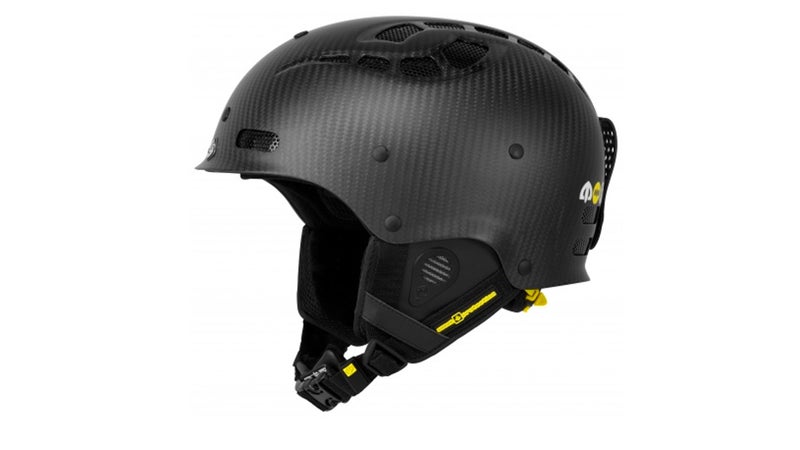Starting next fall, Norwegian helmet maker Sweet Protection will bring what it’s calling “the most advanced snowsports helmet on the market” to North America.
The Grimnir , which was available in Europe this past winter, stakes those superlatives on a host of new technologies. But the innovation we’re most excited about is the claim that the Grimnir is the only lid available that will protect you from your action-cam mount in a crash.
As ���ܳٲ��������reported last year, there’s a growing demand for accessories—including helmet mounts and selfie sticks—that let you attach an action camera to your body to capture better footage. But these tools come with risks: many require making modifications to your gear, which can severely compromise products designed to keep you safe. A camera stuck to a helmet turns into a weapon during a high-speed impact. It’s like gluing a rock to your lid, says Sweet spokesman Scott Kaier. “We don’t want the camera to crash through the shell.”

In order to prevent this, the Grimnir’s carbon fiber shell is reinforced beneath two built-in camera mounts—one on the forehead for a GoPro and one on the helmet’s left side for a Contour action cam. The cameras attach to the lid via removable mounts that are threaded directly into the shell. So when you stop filming, you can remove both the camera and the mounts.
That’s important because those protruding points, which can catch on the snow, may increase the chances of a brain injury in a crash. “A mounted camera could be a loading point for tangential, torque inducing forces and anyone wearing a helmet for head protection ought to shun them,” says Ed Becker, executive director of the Snell Memorial Foundation, a helmet advocacy and certification group. Sweet realized that legions of its customers are still going to want to get their POV footy, and it found a way to both reduce risk when wearers aren’t filming and prevent a camera from going through the helmet as if it were soft butter.
The company’s invested a lot of research and considerable manufacturing time into creating a safe shell. Its designers made helmets that absorb impact by making some spots on the helmet to be more elastic than others.
“Where the human skull has sharp corners or a weakness, we make those spots more rigid. Where it’s flatter and harder, like the sides and top of the skull, we make the shell more elastic. That way we can tune the helmet to be more impact absorbing overall.”
“By changing the lay-up�����Ի� direction of fibers in the carbon-fiber shell, we can control the rigidity [of the material],” says the helmet’s designer, Stale Moller. “Where the human skull has sharp corners or a weakness, we make those spots more rigid. Where it’s flatter [and harder], like the sides and top of the skull, we make the shell more elastic. That way we can tune the helmet to be more impact absorbing overall. Everything is based on the geometry of the human head.” Each shell is hand built, and takes about an hour to construct.
The Grimnir exceeds both the European norm EN 1077 as well as the American ASTM 2040, but because neither agency will comment on specific helmet models, they can’t verify the effectiveness of Sweet’s carbon fiber elasticity differentiation.
But Johan Thiel, the CEO of , a company that partners with many snowsports and cycling helmet brands, including Sweet, believes that the technique has merit. “It’s a hard theory to prove, but it makes a lot of sense,” he says, adding that he uses the Sweet helmet himself.


